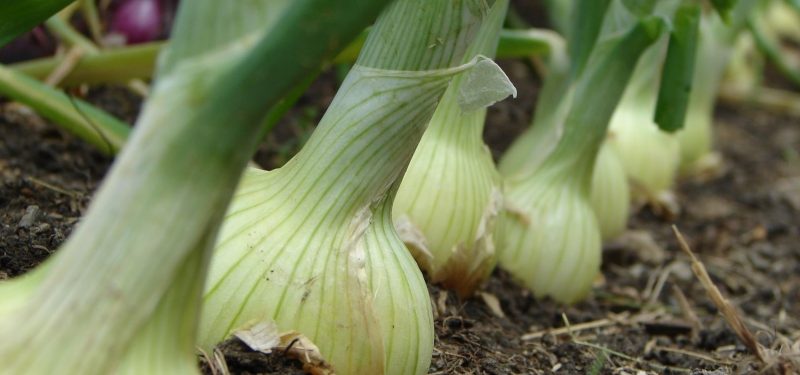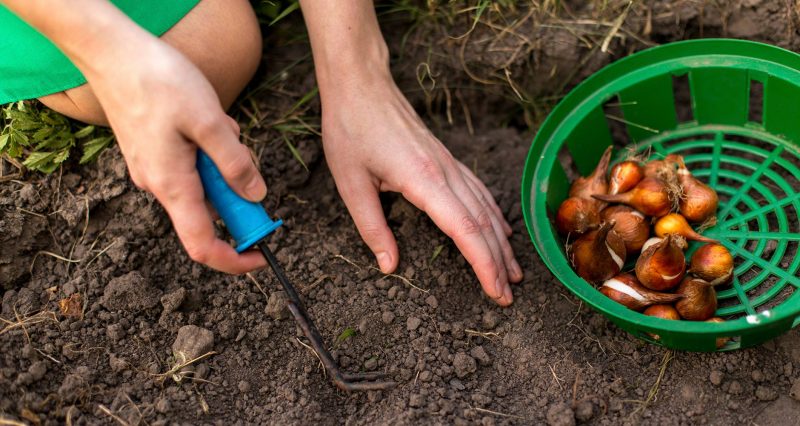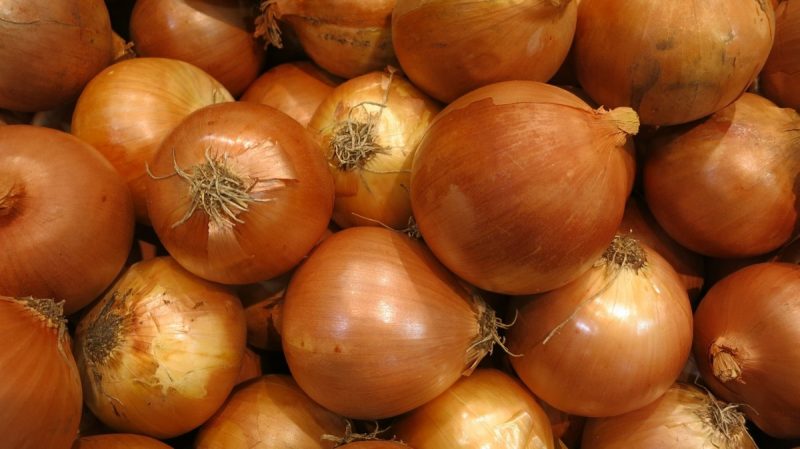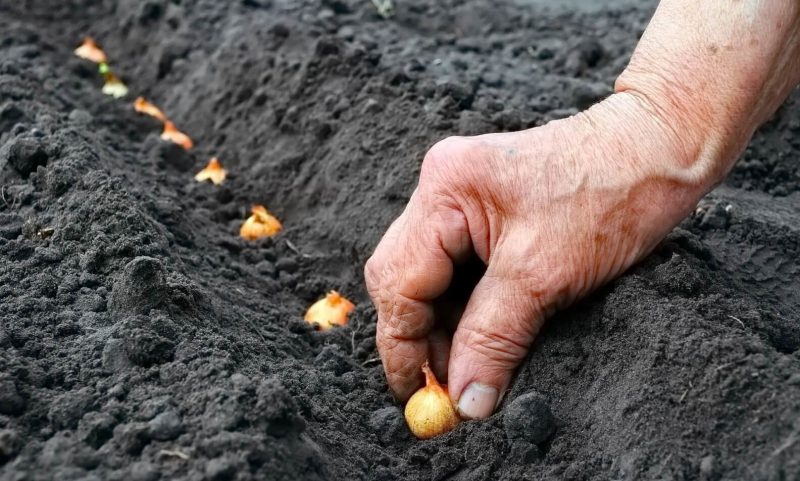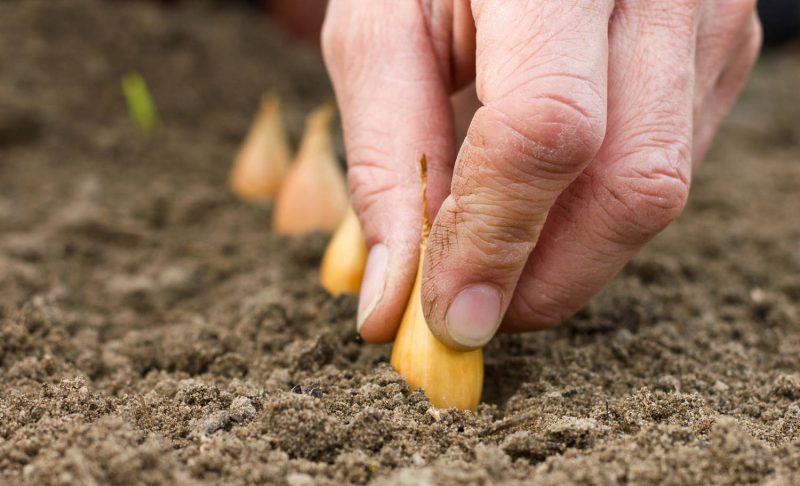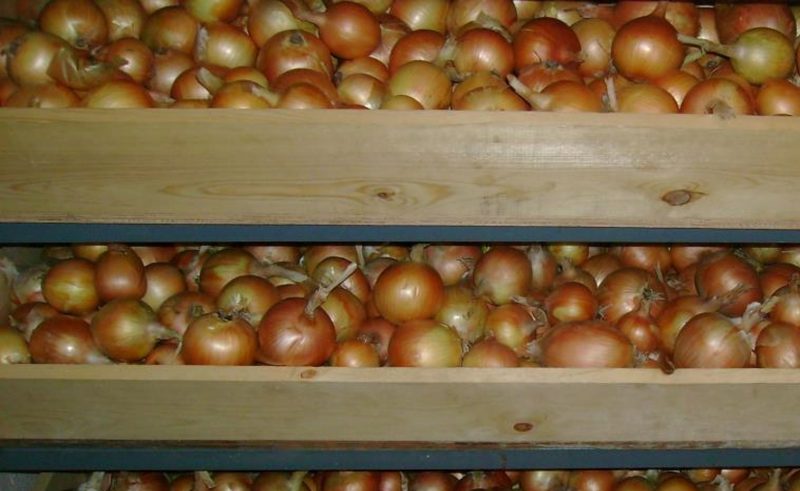Family onions are a type of onion, but they are distinguished by a more saturated taste. This onion is multigloss, and the most popular variety is shallot.
Material Content:
Culture Description
The culture is multi-bud, and has up to 10 heads. Bulbs grow nests, give very delicate leaves. One nest can weigh up to 300 g.
Due to the small size, shallots are very inconvenient to clean, but from it you can cook wonderful and simply excellent dishes. This onion is especially tasty fried, stewed, pickled. They even make jam from shallots.
Bulbs are well stored (up to a year), and even in a warm room. Already in March, culture can be planted in a room on the windowsill, and get greenery already in early spring.
Site and soil preparation
Growing and caring for onions is so simple that even the most inexperienced gardeners will cope with this task. Family onions are surprisingly unpretentious, so the gardener practically does not need to make efforts to get a crop.
This culture will grow well in any area. The main thing is that the soil is neutral. Although onions prefer moist soil with humus and sand. It is best to plant family onions after carrots, beans and potatoes.
Selection of planting material
Shallots for planting need to choose healthy, without spots of rot or fungus. It is advisable to pick out heads weighing about 100 g. If you plant one large onion, then it will yield 8 small onions per season. The amount of harvest depends on the variety. You can not use for planting bulbs in which the heel of the bottom was cut off. This is done before landing.It is advisable to buy the material in a specialized gardening store or in a trusted nursery.
The larger the onion landing head, the more it will produce new onions, but they will be small.
Dates and patterns of planting a family onion
Vegetable planting is preferred in mid-April, although experienced gardeners always monitor the weather. If the shallots are planted too early, when there are still cold days, then it can begin to shoot. Therefore, the timing is completely dependent on the climate of the area. In the southern regions, culture can be planted even in early April.
The shallot root system begins to develop rapidly at + 2-20 degrees. Although the plant can tolerate and cooling to -6. Actively, onions begin to grow at +15, so even in an unstable climate it feels good.
You can plant plants in the winter. But only some varieties are suitable for this: "Albik", "Ginger", "Earring".
The main thing when planting is to observe agricultural technology. At what distance shallot shallot? This onion is not planted too tightly, as each head gives a voluminous bunch of foliage. It is recommended to arrange the culture in rows, leaving between large onions about 30 cm, and between medium 15 cm. Small heads are planted at a distance of 10 cm.
Bulbs must be buried in the soil to a depth of about 3 cm.
Heads should not be placed close to the surface, as they will lack power.
Before planting, the bulbs should be kept in a weak solution of manganese for 15-20 minutes.
How to cut onions before planting
Before you start cutting shallots for planting, you need to prepare it. First, each head is cleaned of dried scales, to internal juicy. Then the bulbs are immersed for 20 minutes in copper sulfate, for which 2 tbsp. l the drug is diluted in 10 liters of water. Treated planting material must be rinsed with clean water.
Before you start cutting the heads, they need to be soaked for an hour in liquid fertilizer. For these purposes, any nutritional composition that is diluted with water in a ratio of 1:10 is suitable.
After that, heel is cut off. Do not be afraid that the excess will be cut off, since the rudiments in the heads are quite deep. Even if out of, for example, 6 rudiments, 2 is damaged, the rest will still yield a good harvest. But still you need to try not to injure the head when trimming. Trimming the heel stimulates the plant to form a powerful root system. After preparation, the onions need to be folded into a large bucket or pan, covered with a lid and put in a cool room until the plant gives root.
Now, when the roots up to 3 mm appear, you should cut the bulbs in half. This is necessary to obtain a crop of larger heads. From one half usually grows to four fairly large bulbs.
The half should have roots and rudiments.
Agrotechnics of cultivation and care
Until the shallots grow to 10 cm, he does not require any care. Plants do not even need to be watered, as the roots of the bulbs must go deep. There is no need to feed or spray onions.
It is interesting:mustard white as siderat
As soon as the planted bulbs sprout, the bed is mulched. Mulch retains moisture well, inhibits the growth of weed grass. The height of the mulch should be at least 5 cm. As a mulching material, peat or straw can be used, if there is grass.
Once the shallots have grown, they should be watered once a week. But with the beginning of June, watering is completely stopped. Usually by the end of June it is already possible to calculate how many bulbs have grown in the nest. If there are more than 5, the extra ones are removed so that the crop is larger.
Not all gardeners know how to feed the plant. In fact, this crop can grow without fertilizing. If the soil on the site is very depleted, then under the shallots make a long rotted compost at the rate of 4 kg per square. Gardeners also use a mixture of urea and superphosphate at the rate of 1 tsp.for 10 liters of water.
Sometimes you can observe how the family onion dries in the garden, the plant quickly turns yellow. The reason may be hiding in a lack of nitrogen. The simplest top dressing in this case is spraying with ammonia: 3 tbsp. l the drug is diluted in 10 liters of water. In the evening, the resulting composition is treated with leaves.
Another reason why the foliage of the family onion turns yellow is a lack of potassium. In this case, the beds are fertilized with potassium compounds.
If the plants are frozen, then the leaves can also turn yellow and even begin to curl.
Diseases, pests and methods of dealing with them
Shallots may also turn yellow due to parasites. Perhaps the base of the pen eats up the worm, which at the same time spoils the bulbs. For this reason, the roots begin to rot and dry. The bulb after the attack of the worm becomes loose, smells unpleasant.
Another dangerous parasite is a fly. Flies lay eggs inside the bulbs, many larvae develop in them, which feed on the plant. It is possible to determine that shallots are attacked by an onion fly by drying the tips of the feather, as well as by changing the color of the whole onion (it becomes light). Vegetable flour most often attacks in the spring, during the flowering period of cherries. Of the chemicals against the parasite, you can use Fitoverm or Spark Bio.
To scare onion flies, yarrow can also be spread out in the garden.
A very harmful parasite is an aphid. This insect usually attacks plants with a whole colony. To get rid of aphids, shallots are treated with a solution of pepper or a decoction of wormwood.
Against insects parasitizing on family onions, insecticides can also be used, but such drugs are toxic. It is much safer to process the bed throughout the season with saline, diluting 200 g of table salt in a bucket of water.
Of the diseases, family onions are susceptible to fungi. To prevent the appearance of a fungal infection, the bed at the beginning of the season is sprayed with Bordeaux liquid. 10 days before collecting shallots, the spraying is stopped.
Harvesting and storage
It should not be delayed with shallot removal, as the heads will lose their keeping quality and will not be well stored. The fact is that already ripened bulbs will begin to draw moisture from the soil, which will shorten the period of winter dormancy.
As soon as the leaves begin to lie down, the nests are simply pulled out of the ground. Do this in the morning when the dew dries. All day the heads should lie on the bed. In the evening, the crop is brought into the room or stacked in the attic, in the barn. There the onion should rest. Foliage can be cut manually with scissors or simply cut off. After harvesting, it is good for the soil to sow green manure immediately.
You can store dried crops in the winter even in a room, for example, in the kitchen or in the pantry. The onion is well preserved, but if the heads are planted for the next season, it is advisable that the room has no more than +21.
You can store shallots in cellars in wooden boxes, as well as in nets suspended from the ceiling. It is very important that the room has good ventilation.
Growing shallots is simple, because this culture does not require painstaking care, quickly ripens and has excellent taste!


